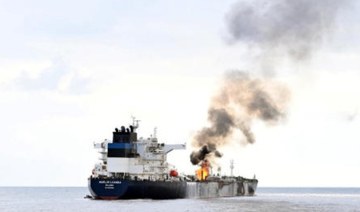Scandal:
UK Royal Navy vessels face a limitation as they lack the necessary missiles to attack Houthi positions in Yemen. This revelation has been termed a “scandal” by a former defence chief. The inability to conduct such attacks highlights a deficiency in the navy’s capabilities in the conflict.
Britain and America Joint Operations:
Britain has joined the United States in operations against the Houthis to stop attacks on shipping in the Red Sea. The majority of strikes on the Yemeni mainland, however, have been carried out by the US Navy. The Daily Telegraph reported on the collaboration, emphasizing the division of responsibilities between the two nations in countering Houthi actions.
Royal Navy destroyer lacks the capability to fire to land targets:
According to a UK defence source, the Royal Navy destroyer HMS Diamond lacks the capability to fire at land targets in the Red Sea. The UK’s offensive capability relies on Royal Air Force jets stationed in Cyprus, approximately 1,500 miles away. HMS Diamond has primarily been involved in intercepting Houthi drones targeting shipping in the Red Sea, using fixed artillery guns. In contrast, US Navy destroyers have the capacity to launch Tomahawk guided missiles with a range of 1,500 miles. A former senior defence chief criticizes the situation, calling it a scandal and unsatisfactory. The Royal Navy’s decision-making affecting capability is highlighted, as RAF jets are flown thousands of miles to compensate for the lack of surface-to-surface missile capability.
Speed up our acquisition processes:
Admiral Sir Tony Radakin, then head of the Royal Navy, cautioned the UK government five years ago. He emphasized the urgency to expedite acquisition processes for “land attack missile systems” on British vessels. Now serving as the head of the UK Armed Forces, his earlier warning underscores the importance of addressing the issue promptly.
Norwegian-made Naval Strike missiles
A temporary system of Norwegian-made Naval Strike missiles has been installed on only one UK vessel since then. This system is yet to undergo testing for effectiveness. A new cruise missile system, specifically for British warships, is scheduled for introduction in 2028. Conservative MP Mark Francois, a former armed forces minister, acknowledges the progress but expresses disappointment. He notes that the lack of a land attack missile in the Royal Navy’s surface fleet was highlighted in a defence committee report two years ago. Francois finds it encouraging that the missile is on order but disappointing that it has not yet entered operational service.
Royal Navy Investment:
Earlier this year, US Navy Secretary Carlos Del Toro stressed the “significantly important” nature of Royal Navy investment. He emphasized its importance in light of the near-term threats faced by the UK and the US. Tobias Ellwood, former chair of the House of Commons Defence Select Committee, urged Defense Secretary Grant Shapps to review the situation. Ellwood highlighted concerns about a small surface fleet lacking the capability to fire on land effectively. Shapps, on Saturday, reaffirmed the commitment to protecting freedom of navigation in the Red Sea.
Royal Air Force capability
The UK Ministry of Defence spokesperson stated that commanders choose the best equipment for coalition operations. HMS Diamond, an air defence destroyer, has been actively engaged in destroying Houthi drones targeting Red Sea shipping. The Royal Air Force possesses high-precision strike capabilities to target land, reducing Houthi attacks with Typhoon aircraft strikes. The statement underscores the adaptability of equipment based on operational needs in coalition efforts.
















